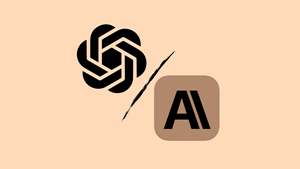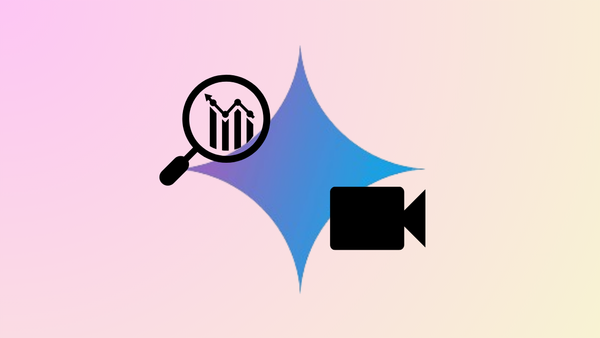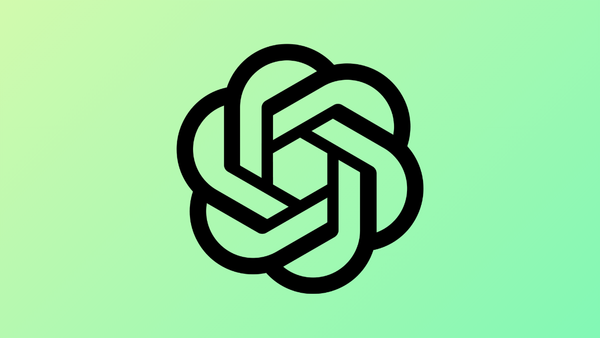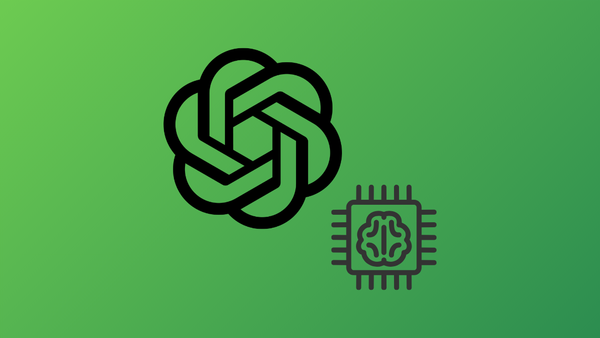Since its launch in November 2022, ChatGPT has captured worldwide attention as an incredibly capable AI chatbot. Its eloquent responses and versatile skills have made it many people's first foray into the potential of large language models backed by massive datasets.
However, in this dynamic landscape, there's another AI quietly making waves - Claude AI, created by the company Anthropic. It offers an alternative generative chatbot that, in some ways, matches or even exceeds ChatGPT's abilities.

Although similar to ChatGPT in many aspects, it's a completely different model offering unique features and capabilities, trained on different philosophies and operational techniques. So, let's see how these two conversational AIs – ChatGPT, backed by Microsoft, and Claude, backed by Google – compare.
ChatGPT vs. Claude
There are a lot of differences you can expect between the two chatbots. Some of these are objective, like differences in their training methods, while others, like their behaviors and usefulness, are rather subjective.
Differences in Training Methodology
There are many core differences that make the two models a lot different than each other.
ChatGPT vs. Claude Learning Methods
ChatGPT has been trained on an extensive dataset to learn language patterns, grammar, facts about the world, and various styles of writing. During training, the model is presented with examples of text and learns to predict the next word in a sentence.
While ChatGPT produces remarkably eloquent and versatile text, its responses are ultimately driven by trying to predict the next most probable words. This is the main reason why ChatGPT can sometimes produce inconsistent outputs that seem well-written but are no better than rambling.
Claude AI, on the other hand, incorporates a technique called Constitutional AI during its training, which aligns it to be helpful, harmless, and honest.
This involves assessing whether responses meet certain critical criteria around being helpful, harmless, and honest before providing feedback during the self-supervised learning process.
ChatGPT vs. Claude Architecture
The core of ChatGPT's technology is the Transformer architecture, which uses layers of attention and feedforward neural networks. The attention mechanism allows the model to focus on different parts of the input text, which is crucial for understanding context and generating relevant responses.
Claude's architecture has some similarities to a Transformer or LSTM neural network language model at a high level. However, many custom modifications have been made to the attention mechanism, objective functions, tokenizer, and other components that make it uniquely optimized for safe performance.
ChatGPT vs. Claude Reinforcement Learning
ChatGPT has been fine-tuned using techniques like Reinforcement Learning from Human Feedback (RLHF). This involves trainers providing the model with feedback on its responses, helping it learn what constitutes a good or bad answer. It also has been programmed to adhere to a set of ethical guidelines, not produce harmful or biased content and has built-in safeguards for sensitive topics.
The reinforcement learning framework used to train Claude is based on Constitutional Reinforcement Learning, which was developed at Anthropic. The model critiques and revises its own outputs during training to better conform to the principles in its "constitution", which we summarize as HHH (honest, harmless, and helpful).
This self-supervised learning from AI feedback is called reinforcement learning from AI feedback (RLAIF). Anthropic has also employed additional techniques like constant social calibration to further help Claude recognize and mitigate unintended potential harms, which it cannot self-identify, using annotations by people.
Differences in Design Philosophy
With ChatGPT, OpenAI's emphasis has been on creating a model that is as versatile and general-purpose as possible, with a strong focus on safety and minimizing harmful outputs.
Anthropic's emphasis for Claude has been on being helpful, honest, and harmless instead of prioritizing wider capabilities, hence reducing collateral downsides that come with ChatGPT.
By optimizing to avoid generating harmful, biased, or misleading text, Claude mostly manages to steer clear of the offensive gaffes that plague ChatGPT. OpenAI performs its own filtering on ChatGPT to make it safer, but Claude's training protocol bakes safety into the model itself rather than attempting to censor problematic outputs after the fact. This commitment to safety is not just a feature but a fundamental aspect of Claude's training process, which is one of the major differences between the two bots.
Free and Paid Model Differences
B0th chatbots offer a Pro subscription and a free version. Apart from the core differences that make the two models different, they also differ practically in what both versions offer.
The free version for ChatGPT is currently GPT-3.5, which is remarkably less capable than the paid version, i.e., GPT-4. Claude offers the same model, Claude 2.1, to both its paid and free users. The pro subscriptions for both models cost around $20/month.
When it comes to the free versions, users might get more out of Claude than ChatGPT. Claude's training data has a cut-off at December 2022, and it might have some knowledge of events up to early 2023, whereas ChatGPT-3.5's training data only goes up to January 2022 (moved up from September 2021).
For paid users, however, ChatGPT is seemingly the better choice. GPT-4's training cut-off is now said to be April 2023, and it can also access the Internet, which puts it at a considerable advantage over Claude. Paid users also get a sleuth of features with a ChatGPT subscription, like the Data Analysis model, Plugins, and GPTs. The only advantage Claude users get after paying for the subscription is an increased usage limit.
Which Model is Best for You?
Whether you should use Claude or ChatGPT ultimately comes down to personal preferences.
For example, if you want to use an AI that prioritizes safety above all else, you'll want to reach for Claude. Anthropic's main concern is a stricter set of policies around AI safety, and if that's the most important thing to you, you need not look elsewhere. But if you want an AI that gives you the most value for your money (if you're going for the Pro subscription), ChatGPT is a clear winner.
When it comes to their capabilities, both ChatGPT and Claude can undertake a variety of tasks.
But there are some areas where Claude excels over ChatGPT. When it comes to handling data-related tasks, Claude performs better than ChatGPT. For example, it provides optimized code almost every time. Claude is also better at handling tasks such as summarizing PDFs.
However, for many other tasks, ChatGPT holds dominion over Claude; it's better at research, and presenting factual information. When it comes to academic writing, ChatGPT demonstrates better structure. But Claude is great at handling creative writing. Claude can also process large texts and still maintain context throughout the conversation because of its 200K token context window.
While ChatGPT and Claude both offer impressive conversational abilities, they differ substantially in their training methodologies, architectures, and design philosophies. ChatGPT prioritizes versatility and general capabilities, while Claude focuses more narrowly on safety and being helpful, harmless, and honest. Overall, both bots represent significant advances in generative language models, but their differences in goals and techniques result in ChatGPT and Claude, each having their own strengths and suitable use cases.











Member discussion